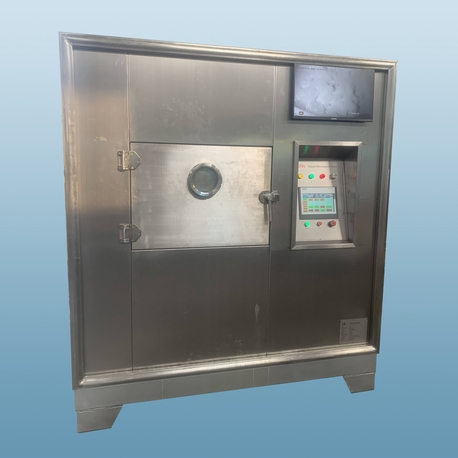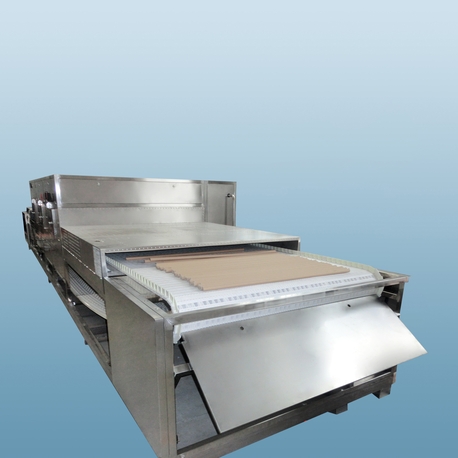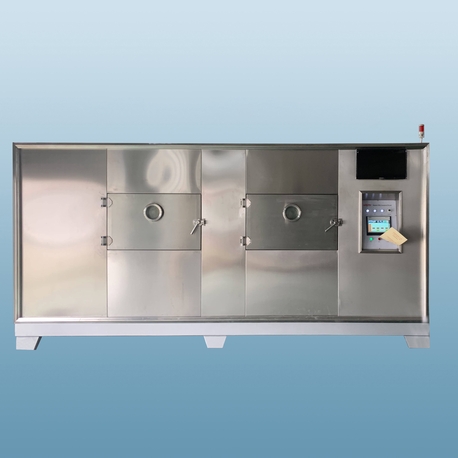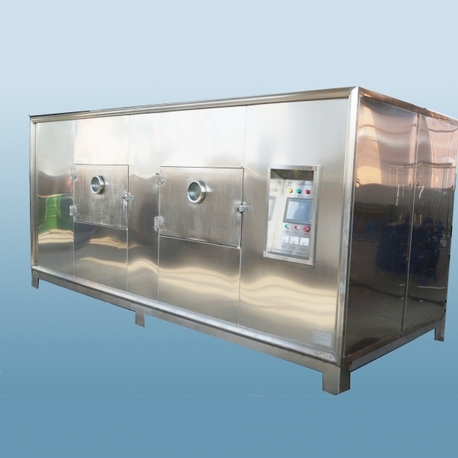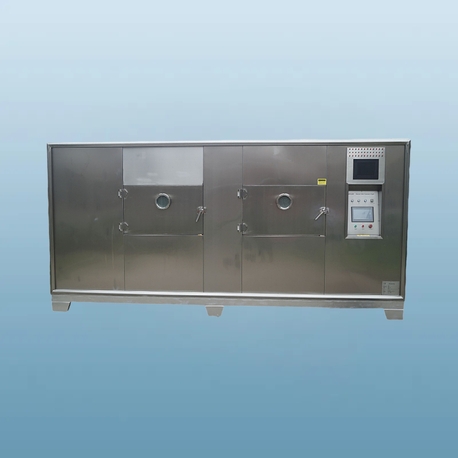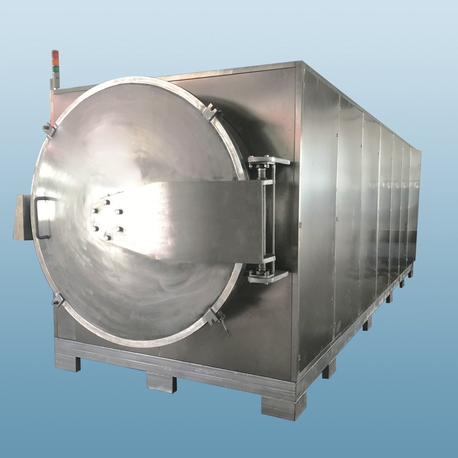In today's fast-paced world, kitchen appliances that combine efficiency with health benefits are in high demand. Among these innovations, the vacuum microwave oven stands out as a game-changer. This appliance merges the speed of microwave cooking with the principles of vacuum technology to deliver superior results. If you're tired of soggy leftovers or nutrient-deficient meals, a vacuum microwave oven might be the solution. In this article, we'll dive into five essential aspects of this device, explaining how it works, its advantages, and why it could be a valuable addition to your kitchen. From preserving nutrients to versatile cooking options, the vacuum microwave oven offers a modern approach to meal preparation that aligns with contemporary lifestyles. Let's explore how this technology can transform your cooking experience.
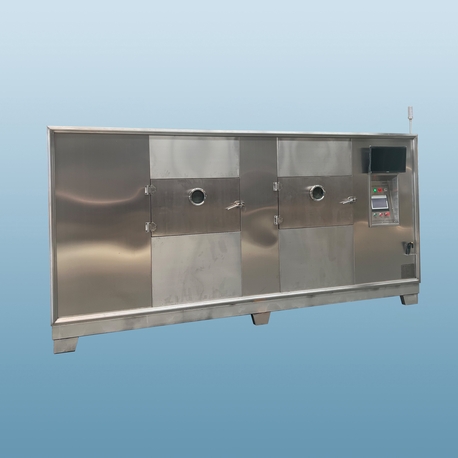
What is a Vacuum Microwave Oven?
A vacuum microwave oven is a hybrid appliance that combines microwave heating with vacuum-sealed environments to cook food more evenly and retain moisture and nutrients. Unlike traditional microwaves that use electromagnetic waves to agitate water molecules in food, the vacuum microwave oven first removes air from the cooking chamber, creating a low-pressure environment. This process lowers the boiling point of water, allowing food to cook at lower temperatures. The result is faster, more efficient cooking that minimizes the loss of vitamins and minerals. Originally developed for industrial food processing, this technology has now been adapted for home use, offering a unique blend of convenience and health benefits. The vacuum microwave oven is designed to handle a variety of foods, from meats and vegetables to delicate desserts, making it a versatile tool for any kitchen. By integrating vacuum technology, it addresses common issues like uneven heating and dryness, providing a superior alternative to conventional methods.
How Does a Vacuum Microwave Oven Work?
The operation of a vacuum microwave oven involves a two-step process that sets it apart from standard microwaves. First, the appliance uses a vacuum pump to extract air from the cooking chamber, reducing atmospheric pressure. This vacuum environment lowers the boiling point of water, meaning food can cook at temperatures as low as 40-60°C (104-140°F) instead of the usual 100°C (212°F). Second, microwave energy is applied to heat the food rapidly and uniformly. The combination ensures that moisture is locked in, preventing dehydration and preserving textures. For instance, when cooking vegetables, the vacuum microwave oven maintains their crispness and color, while meats remain tender and juicy. This method also reduces cooking times by up to 50% compared to traditional ovens or stovetops. Many models include smart controls to adjust pressure and temperature settings, allowing for precise customization based on the food type. Overall, the vacuum microwave oven leverages scientific principles to deliver efficient, healthy meals without compromising on taste or quality.
Key Advantages of Using a Vacuum Microwave Oven
One of the most compelling reasons to invest in a vacuum microwave oven is its array of benefits. Firstly, it excels at nutrient retention. By cooking at lower temperatures, it minimizes the degradation of heat-sensitive vitamins like vitamin C and B complexes, which are often lost in boiling or steaming. Studies show that vacuum cooking can preserve up to 90% of nutrients compared to 50-60% in conventional methods. Secondly, this appliance enhances flavor and texture. The vacuum-sealed environment prevents oxidation and moisture loss, resulting in dishes that are more aromatic and visually appealing. For example, reheated meals taste fresher, as if they were just prepared. Thirdly, the vacuum microwave oven offers energy efficiency. Its faster cooking times and lower temperature requirements reduce electricity consumption, making it an eco-friendly choice. Additionally, it supports versatile cooking styles, including sous-vide, steaming, and defrosting, all in one device. Lastly, it promotes food safety by reducing bacterial growth in the vacuum setting, extending the shelf life of cooked dishes. These advantages make the vacuum microwave oven a smart investment for health-conscious households.
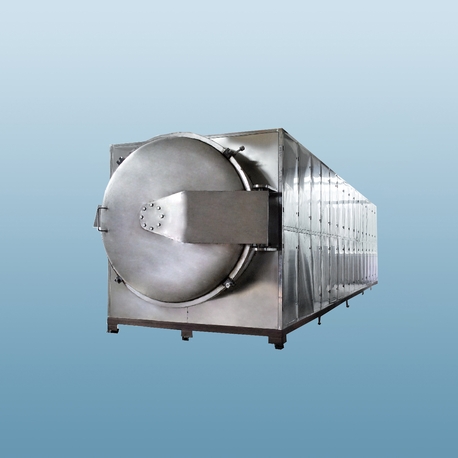
Differences Between Vacuum Microwave Ovens and Traditional Microwaves
While both appliances use microwave technology, the vacuum microwave oven differs significantly from traditional models. Traditional microwaves rely solely on electromagnetic waves to heat food, often leading to hot spots, sogginess, and nutrient loss due to high temperatures and steam buildup. In contrast, the vacuum microwave oven incorporates a vacuum chamber that eliminates air, allowing for gentler, more controlled heating. This results in even cooking without the need for constant stirring or rotating. Another key difference is versatility: traditional microwaves are best for simple tasks like reheating or defrosting, whereas a vacuum microwave oven can handle complex recipes, such as slow-cooked meats or delicate pastries, thanks to its adjustable pressure and temperature settings. Cost-wise, vacuum microwave ovens tend to be more expensive upfront but offer long-term savings through energy efficiency and reduced food waste. Maintenance also varies; traditional microwaves are easier to clean but may require more frequent repairs, while vacuum models need periodic checks on seals and pumps. Ultimately, the vacuum microwave oven provides a premium cooking experience that addresses the limitations of standard microwaves.
Practical Applications in Everyday Cooking
The vacuum microwave oven isn't just for gourmet chefs; it has practical uses in daily meal preparation. For busy families, it simplifies weeknight dinners by cooking proteins like chicken or fish in minutes while keeping them moist and flavorful. It's also ideal for meal prepping, as vacuum-sealed containers can store cooked food for days without quality loss. In baking, this oven produces light, airy cakes and breads by preventing crust formation too early. For health enthusiasts, it's perfect for preparing steamed vegetables or infused waters that retain maximum nutrients. Additionally, the vacuum microwave oven excels at defrosting frozen foods evenly, avoiding the partial cooking that occurs in traditional microwaves. Creative cooks can experiment with sous-vide techniques for restaurant-quality dishes at home, such as perfectly medium-rare steaks or custards. Many users also find it useful for preserving herbs and making quick pickles. With its multifunctional design, the vacuum microwave oven adapts to various cuisines and dietary needs, making it a cornerstone of modern kitchens.
Maintenance and Safety Tips for Longevity
To ensure your vacuum microwave oven lasts for years, proper maintenance is crucial. Start by regularly cleaning the interior and exterior with a soft cloth and mild detergent, avoiding abrasive materials that could damage seals. Check the vacuum pump and door gaskets for wear every few months, as leaks can compromise performance. It's also important to use compatible cookware, such as vacuum-safe containers or silicone molds, to prevent accidents. For safety, always follow manufacturer guidelines on pressure levels and cooking times to avoid overloading the system. Unlike traditional microwaves, the vacuum microwave oven should not be used with metal utensils or non-vacuum-rated lids, as this could cause malfunctions. Additionally, allow the appliance to cool down after use before cleaning or storing. If you notice unusual noises or pressure drops, consult a professional for servicing. By adhering to these tips, you'll maximize efficiency and safety, ensuring your vacuum microwave oven remains a reliable kitchen companion.
In summary, the vacuum microwave oven represents a significant advancement in kitchen technology, blending speed, health, and versatility. From its ability to preserve nutrients and enhance flavors to its energy-efficient operation, this appliance addresses many shortcomings of traditional cooking methods. Whether you're a home cook or a health enthusiast, incorporating a vacuum microwave oven into your routine can lead to better meals and a more sustainable lifestyle. As food trends evolve, this device is poised to become a staple in modern households, offering a practical solution for today's culinary challenges.
Frequently Asked Questions (FAQ)
Q1: What is a vacuum microwave oven and how is it different from a regular microwave?
A1: A vacuum microwave oven combines microwave heating with a vacuum-sealed environment to cook food at lower temperatures, preserving nutrients and moisture. Unlike regular microwaves, which can cause uneven heating and dryness, this appliance uses reduced pressure to achieve more uniform and gentle cooking, making it ideal for a wider range of dishes.
Q2: Can I use a vacuum microwave oven for all types of food?
A2: Yes, a vacuum microwave oven is versatile and can handle various foods, including meats, vegetables, grains, and desserts. However, it's best suited for items that benefit from moist, even cooking. Avoid using it with foods that require high-temperature crisping, as the vacuum setting may not achieve the same browning as an oven or fryer.
Q3: Is a vacuum microwave oven safe for daily use?
A3: Absolutely, when used according to manufacturer instructions. The vacuum environment actually enhances safety by reducing bacterial growth. Ensure you follow guidelines on pressure settings and use appropriate cookware to prevent accidents. Regular maintenance, such as checking seals, also contributes to safe operation.
Q4: How does a vacuum microwave oven help in retaining nutrients?
A4: By cooking at lower temperatures due to the vacuum effect, the appliance minimizes the breakdown of heat-sensitive vitamins and minerals. Studies indicate that vacuum cooking can preserve up to 90% of nutrients compared to traditional methods, making it a healthier choice for preparing meals.
Q5: What maintenance does a vacuum microwave oven require?
A5: Maintenance includes cleaning the interior after each use, inspecting vacuum seals and pumps periodically, and using compatible containers. Avoid harsh chemicals and ensure the appliance is unplugged during cleaning. If you encounter issues like pressure loss, seek professional servicing to maintain optimal performance.


